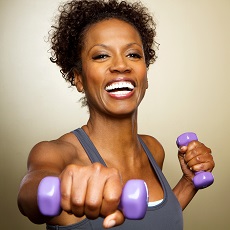I. It has been awarded 109 times to 216 Nobel laureates between 1901 and 2018.
II. 39 prizes were awarded to one laureate
III. 33 prizes were shared by 2 two laureates
IV. 37 prizes were shared by 3 laureate
V. The nobel prize amount for 2018 was set at 9 million SEK about $986K Per full Nobel Prize.
VI. The youngest Nobel prize laureate in medicine is Frederick Banting (Age: 32/Nationality: Canadian/ year of award:1923)"for the discovery of insulin."
VII. The oldest Nobel prize laureate in medicine is Peyton Rous (Age: 87 /Nationality: American/ Year of award:1966)"for his discovery of tumour-inducing viruses."
VIII. The Nobel Prize and Prize in Medicine have been awarded to women 12 times between 1901 and 2018
II. 39 prizes were awarded to one laureate
III. 33 prizes were shared by 2 two laureates
IV. 37 prizes were shared by 3 laureate
V. The nobel prize amount for 2018 was set at 9 million SEK about $986K Per full Nobel Prize.
VI. The youngest Nobel prize laureate in medicine is Frederick Banting (Age: 32/Nationality: Canadian/ year of award:1923)"for the discovery of insulin."
VII. The oldest Nobel prize laureate in medicine is Peyton Rous (Age: 87 /Nationality: American/ Year of award:1966)"for his discovery of tumour-inducing viruses."
VIII. The Nobel Prize and Prize in Medicine have been awarded to women 12 times between 1901 and 2018
USA:7
Germany:1
Italy: 1
Italy: 1
France:1
Norway:1
China:1
1947: Gerty Theresa Cori, née Radnitz( American)
“for their discovery of the course of the catalytic conversion of glycogen”
1977: Rosalyn Yalow (American)
“for the development of radioimmunoassays of peptide hormones”
1983: Barbara McClintock (American) the only one who has received an unshared Nobel Prize.
1986: Rita Levi-Montalcini (Italian)
“for their discoveries of growth factors”
1988: Gertrude B. Elion(American)
“for their discoveries of important principles for drug treatment”
1995: Christiane Nüsslein-Volhard(German)
“for their discoveries concerning the genetic control of early embryonic development”
2004: Linda B. Buck(American)
“for their discoveries of odorant receptors and the organization of the olfactory system”
2008: Françoise Barré-Sinoussi(French)
“for their discovery of human immunodeficiency virus”
2009: Carol W. Greider(American) & Elizabeth H. Blackburn(American)
“for the discovery of how chromosomes are protected by telomeres and the enzyme telomerase”
2014: May-Britt Moser(Norwegian)
“for their discoveries of cells that constitute a positioning system in the brain”
2015: Tu Youyou(Chinese)
“for her discoveries concerning a novel therapy against Malaria”
9. Top 10 nationalities with the most Nobel Laureates In Medicine:
USA(~100)
UK(39)
Germany(16)
France(11)
Sweden(8)
Switzerland (7)
Australia(6)
Austria(5)
Denmark(5)
Japan(5)
10. Top 8 institutions with the most Nobel laureates in medicine:
Havard (University and Medical School combined ; :12
:12  :0)
:0)
Rockefeller University( :10
:10 :0)
:0)
Pasteur institute( :6
:6  :1)
:1)
Massachusetts Institute of Technology ( :5
:5  :0)
:0)
California Institute of Technology( :5
:5  :0)
:0)
University College London( :5
:5  :0)
:0)
Oxford University( :5
:5  : 0)
: 0)
Max Plank Institute( :4
:4  :1)
:1)
Source: data.nobelprize.org
China:1
1947: Gerty Theresa Cori, née Radnitz( American)
“for their discovery of the course of the catalytic conversion of glycogen”
1977: Rosalyn Yalow (American)
“for the development of radioimmunoassays of peptide hormones”
1983: Barbara McClintock (American) the only one who has received an unshared Nobel Prize.
1986: Rita Levi-Montalcini (Italian)
“for their discoveries of growth factors”
1988: Gertrude B. Elion(American)
“for their discoveries of important principles for drug treatment”
1995: Christiane Nüsslein-Volhard(German)
“for their discoveries concerning the genetic control of early embryonic development”
2004: Linda B. Buck(American)
“for their discoveries of odorant receptors and the organization of the olfactory system”
2008: Françoise Barré-Sinoussi(French)
“for their discovery of human immunodeficiency virus”
2009: Carol W. Greider(American) & Elizabeth H. Blackburn(American)
“for the discovery of how chromosomes are protected by telomeres and the enzyme telomerase”
2014: May-Britt Moser(Norwegian)
“for their discoveries of cells that constitute a positioning system in the brain”
2015: Tu Youyou(Chinese)
“for her discoveries concerning a novel therapy against Malaria”
9. Top 10 nationalities with the most Nobel Laureates In Medicine:
USA(~100)
UK(39)
Germany(16)
France(11)
Sweden(8)
Switzerland (7)
Australia(6)
Austria(5)
Denmark(5)
Japan(5)
10. Top 8 institutions with the most Nobel laureates in medicine:
Havard (University and Medical School combined ;
Rockefeller University(
Pasteur institute(
Massachusetts Institute of Technology (
California Institute of Technology(
University College London(
Oxford University(
Max Plank Institute(
Source: data.nobelprize.org





















